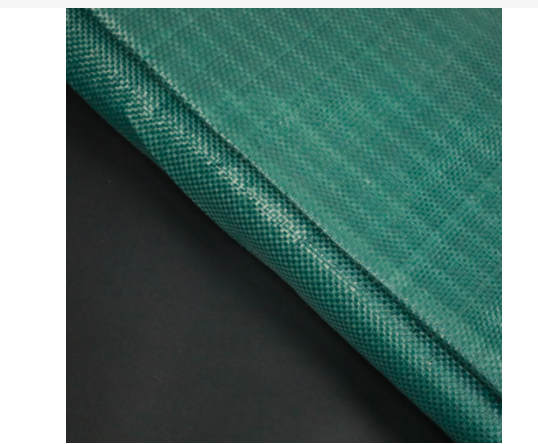- Understanding the Role of Geomembrane Liners in Waste Management
- Innovations in Geomembrane Liners for Water Management
- Geomembrane Liners: A Comprehensive Guide
- The Future of Geomembrane Liners in Civil Engineering
- Geomembrane Liners: Enhancing Landfill Stability
Manager:
WhatsApp:+86 177 0135 2670
Tel:+86 177 0135 2670
Email:marketing@okorder.com
Address:3rd Floor, No.2 Building, No.1 Sanlihe Road
Geotextile Landscaping Fabric: An Unrecognized Hero of Outside Areas
The Geotextile fabric used in Landscaping is a silent hero among landscapers where every detail counts and nature’s blank canvas is artistically created. This exceptional material that goes unnoticed underneath acts as a foundation, making our outdoor space successful. As we embark on the journey about geotextile, know that it is the perfect partner for building sustainable, durable and beautiful landscapes.

The Protective Hug of Geotextile Landscaping Fabric
Geotextiles are groundcloths specifically engineered to work with the earth. It has a strong but resilient structure made from strong polymers such as polypropylene or polyester that provides resistance against the elements for long lasting use outdoors. The major purpose of this kind of textile is to act as an erosion control layer, assist in drainage, and improve landscape structural stability.
Weaving Strength and Versatility: Woven and Non-woven geotextiles
Woven (pun intended) into the world of geotextiles fabrics is an elaborate array of options each with its own unique features and uses. For example, woven geotextiles are made by intertwining polypropylene layers which results in high tensile strength characteristics without clogging thus make them ideal for pavement preservation under heavy loads. On the other hand non-woven geotextiles formed by needle-punched or poly-spun fibers offer a tough yet permeable barrier through which water flows while preventing soil disturbance.
Applications in Landscaping: A Symphony of Utility
This versatile solution can be applied to various areas depending on their needs making landscaping applications for geotexitle fabric more diverse than one might expect when looking at gardens around us. This includes reinforcing slopes prone to erosion or serving as a barrier beneath garden beds and pathways. Consequently it increases durability and sustainability ensuring longer lifespan for those spaces outside. Its use in controlling erosions also stands out since it helps in soil stabilization and vegetative growth that maintains land’s aesthetic values.
Erosion Control and Drainage: The Silent Guardians
Geotextile fabric is a highly effective tool for erosion control in areas where soil loss may occur. It secures the soil hence preventing it from being washed away while also promoting the growth of vegetation, which further cements the area. Geotextile fabrics used in drainage systems ensure excess water is directed away from sensitive areas thus preventing water logging as well as maintaining healthy soils for plants to grow on.
The Benefits of Geotextile Fabrics: A Sustainable and Cost-Effective Choice
There are many advantages that come with using geotextile fabrics in landscaping. They are durable and long lasting even withstanding heavy loads and time itself. This endurance translates into savings on maintenance costs because structures and landscapes protected by geotextiles require less frequent repairs or replacements. Furthermore, these textile materials enhances environmental sustainability through efficient resource utilization within landscapes’ different sections.
Installation: Laying the Groundwork for a Strong Landscape
Proper installation is key to the effectiveness of geotextile fabric. Site preparation should be done meticulously including removal of debris and creating a solid level ground. After that, the material should then be unrolled carefully removing any wrinkles if any, so that they will not form gaps when overlapping at edges. Proper anchoring using pins or staples along edges/overlaps will prevent migration and maintain functionality of this geosynthetic material if properly fixed down onto the base layer but not too tight such that they squeeze out its air flow capacity unnecessarily.
Stitched Conclusion
The geotextile landscaping fabric is not only material but a commitment to sustainability and durable outdoor spaces that can stand the test of time. It functions as the silent caretaker of our landscapes, giving them their unseen power and solidity. As we go about cultivating and tending to our gardens and green spaces, it is important for us to bear in mind that the contribution made by geotextiles fabrics to their resilience and longevity should never be underestimated.
Whilst walking through a well-kept garden or admiring the workmanship on a landscaped area next time around, have you ever taken time to notice invisible layers of geotextile fabrics beneath contributing towards its lasting beauty as well as toughness? They are the unsung heroes of landscape making, testimony of human innovation with nature and an integral aspect in our desire to make outdoors both functional and beautiful. Geotextile landscape fabric helps us plant sustainable fabrics directly into soil structures we walk on every day, thereby providing a basis for future generations’ flourishing sceneries.
- Previous:Unsung Heroes of Modern Engineering: The Geotextile Filtration Fabric
- Next:The Silent Guardians: Revealing the Power of Non-Woven Geotextile Filter Fabrics






